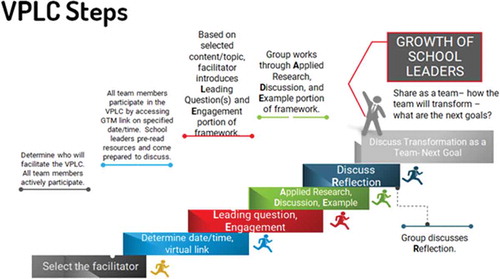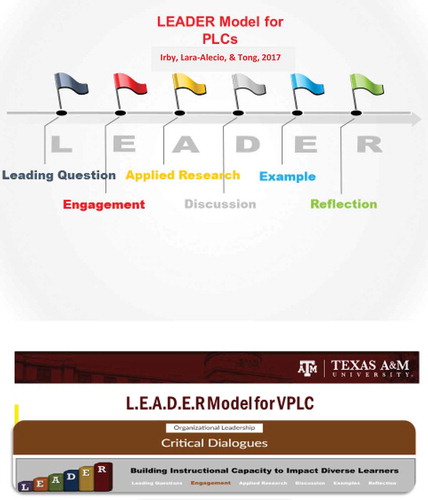Editor
This issue of Mentoring and Tutoring: Partnership in Learning includes research from scholars representing Virginia, South Dakota, North Dakota, Florida, in the United States and Australia, Hungary, Singapore, and the United Kingdom. These international contributors explore a range of ideas, including mentoring in medicine, inter-relational developmental mentoring in higher education institutions, the mentoring of preservice and novice teachers, informal mentoring of aspiring school leaders, and the benefit of tutoring on the pre-service teacher tutor. Even in the online or virtual mentoring, tutoring, and coaching situation in which we find ourselves during COVID-19, we can still make a difference. I would like to share additional work that we have been doing within Texas A&M Univesity's Education Leadership Research Center (ELRC) and the Center for Research and Development for English Language and Literacy Acquistion (CRDLLA) and via two of our U.S. Department of Education grants from OELA and SEED. I first provide a little history of professional development and virtual professional learning communities which include virtual mentoring and coaching.
In the last decade of the 20th Century and almost 30 years ago to date, Lave and Wenger (Citation1991) indicated that a community of practice can be framed so that teachers collaboratively improve their teaching by constructing and expanding their pedagogical understandings to improve student achievement, a notion that was expanded by Croft, Coggshall, Dolan, and Powers (Citation2010), Darling-Hammond (Citation2000), and Kirschner and Lai (Citation2007). A common framework for developing communities of practice is professional learning communities (PLC; DuFour & Eaker, Citation1998) which promote teachers as professionals coming together in a common workplace to learn and improve their practice in order to improve student learning (DuFour, Citation2007). The PLC is a model for on-campus professional development. However, Carpenter (Citation2017) indicated that typical concepts of PD have hindered the fidelity of implementation of the PLC model over time.
Our PD concept has taken PD online with what we have contextualized as virtual PD (VPD). Within this, we have also included the aspect of a PLC contextualized as virtual PLCs (VPLCs). We have had over 100,000 compiled hours of VPD offered and over 1000 hours of compiled VPLC hours provided which have been supported by a trained virtual mentor-coach (VMC). We built VPD model with Massive Open Online Individualized Learning (MOOPIL) modules (Irby, Sutton-Jones, Lara-Alecio, & Tong, Citation2017). A MOOPIL VPD is offered on a learning management system as a group process or for individuals. The VPLC with the VMC is a part of the group PD process. Irby, Lara-Alecio, and Tong (Citation2017) developed a mentoring and/or coaching process for MOOPIL VPDs that have worked well in practice for either the individual or the VPLC groups. During the VPLCs, VMCs use a process of L.E.A.D.E.R. (Leading Question, Engagement, Applied Research, Discussion, Example(s), and Reflection) and it is shown in where it is included as the guide for a MOOPIL VPD on the topic of organizational leadership.
Figure 2. VPLC L.E.A.D.E.R. steps (Irby, Citation2020).

An example of the L.E.A.D.E.R. is demonstrated in in an applicable example of a VPLC usage in which a VMC leads mentees/coaches and introduces the Leading Question(s) and Engagement portion of the model. Applied Research (information from relevant research studies) is then presented. Next, there is a Discussion that ensues with Examples of the topic of the MOOPIL shared from the teachers’ or the leaders’ perspectives. Ultimately, there is Reflection which is based on the Brown and Irby (Citation2001) Reflection Cycle which actually ends with the fifth step of Transform. Without transformation of practice based on the new learnings that grow out of the MOOPIL VPDs, there is little to no improved practice.
This L.E.A.D.E.R. model is one in which higher education has worked with teachers and administrators to improve instruction and/or instructional leadership so that there can be improved practice in the classroom and at the school.
Following is an overview of other practices research from scholars around the world. For example, Hee, Toh, Yap, Toh, Kanesvaran, Mason and Krishna, in their article, The Development and Design of a Framework to Match Mentees and Mentors Through a Systematic Review and Thematic Analysis of Mentoring Programs Between 2000 and 2015, conducted a systematic review of the matching process for medical students in mentoring. In the next article, Mentoring as a Developmental Identity Process, Nganga, Bowne, and Stremmel examined how a developmental mentoring framework can be implemented when junior faculty, tenured faculty, and department heads engage in the mentoring process. Using narrative inquiry, they highlighted the usefulness of reciprocal developmental mentoring relationships.
Sheridan and Nguyen, in their article, Operationalizing the Mentoring Processes as Perceived by Teacher Mentors, applied qualitative analysis to increase understanding of how experienced teacher mentors operationalize their support of preservice teachers and move within four phases of a mentoring relationship. In Analyzing Mentor Narratives of Reflective Practice: A Case for Supporting Adult Learning in Hungarian Initial Teacher Education, Dorner and Káplár-Kodácsy used a phenomenographic approach to examine the way in which senior mentor teachers imagine and apply mentoring for reflective practice when mentoring novice teachers at Hungarian primary and secondary schools. Furthermore, Parfitt and Rose, in Informal Mentoring for Aspiring School Leaders: A Phenomenological Study, explored informal mentoring for aspiring school leaders using a phenomenological approach. They identified four themes from the data analysis: (a) defining informal mentoring, (b) characteristics of effective informal mentors, (c) constructive relationship, and (d) mentoring recommendations.
In the final article, The Impact of AVID Tutoring on Developing a Teacher Identity, Bowen and Duffield applied qualitative measures to take note of the influence participating as tutors in a tutoring program had on the professional development of pre-service teachers. They identified ways in which participating as tutors influenced the teaching practice and teaching.
Publishing in Mentoring and Tutoring
Authors are reminded as they submit their work to the journal to ensure all manuscripts follow the American Psychological Association’s Publication Manual (6th edition) format. We receive quite a number with APA formatting errors. In Volume 20, Issue 1, we outlined several common concerns with submissions. When writing your manuscript, please remember to check your headings, spacing, table formats, and references for correct 6th edition usage. Because the journal is very popular and competitive, and we are receiving on average three to five manuscripts every 2 weeks. Please prepare works that are extremely attentive to detail (e.g., current and relevant citations, high-quality writing, careful proofreading, proper formatting style) and that are making specific contributions to the field of mentoring and tutoring. For further information, consult the Taylor & Francis posting of the M&T author guidelines for article manuscripts and book reviews: http://www.tandf.co.uk/journals/authors/cmetauth.asp (ISSN 1361–1267).
We do not conduct pre-reviews; rather, we will be mentoring authors in the publication process within the FastTrack system review process. That said, the Editor reserves the right to conduct desk rejections at the outset if manuscripts to not follow the prescribed guidelines. Please go to the NCPEA Manuscript FastTrack system to register as a user and then upload your manuscript and any additional information through the system. The FastTrack system helps with the ease of communication between authors, reviewers, and the editor and resolves issues of overloaded email inboxes.
The current requirements for M&T are that the paper, not including references and abstract, should be a maximum of 30 pages, including references, tables, and figures. Depending on the manuscript, we may consider manuscripts that are longer than 30 pages, and certainly, we will accept manuscripts shorter than the prescribed 30 pages. If you have any questions about how to submit your manuscript to M&T, please go to the National Council of Professors of Educational Administration (NCPEA) Publications at http://www.ncpeapublications.org. Click on M&T from the Menu of Buttons on the top of that screen. The submission link appears there on the M&T home page. You may, of course, access the journal page from the Taylor & Francis Publisher page at http://www.tandf.co.uk/journals/titles/13611267.asp.
Qualified individuals who serve on the Review Board, along with select Editorial Board members provide commentaries. We would also like for you to register in the same location as you submit to be considered to be a member of the M&T Journal Review Board. We will be acknowledging the Review Board at the end of the year and a top reviewer will be honored. The acceptance rate of the journal is currently 10%. Mentoring & Tutoring is abstracted in Academic Search; Australian Education Index (AEI); Australian Research Council (ARC) Ranked Journal List; Cabells; National Database for Research into International Education (NDRI); British Education Index; Contents Pages in Education; Educational Research Abstracts online (ERA); EBSCOhost EJS; Emerging Sources Citation Index (ESCI); Education Resources Information Center (ERIC); PsycINFO and SCOPUS®, and Cabell’s Directory of Publishing Opportunities in Educational Curriculum and Methods. Additionally, Mentoring & Tutoring is now included in the Thomson Reuters Emerging Sources Citation Index.
Many authors have been turning to the M&T journal as the venue-of-choice for publishing high-quality works for over 20 years. M&T is the longest-running mentoring journal in the field. This refereed, peer-reviewed journal is known worldwide. Authors, readers, and subscribers are from different countries and various types of institutions and professional environments. The editorial team is committed to producing timely, thorough reviews, modeling conscientious guidance and support, and being open to a wide scope of topics and methods related to mentoring and tutoring, collaboration, and learning.
Books to be reviewed must be about mentoring and tutoring. Visit this journal’s website, http://www.tandf.co.uk/journals/carfax/13611267.html, for more information about M&T, as well as special rates and discounts.
Disclosure statement
No potential conflict of interest was reported by the author.
References
- Brown, G., & Irby, B. (2001). The principal portfolio. Thousand Oaks, CA: Corwin Press.
- Carpenter, D. (2017). Collaborative inquiry and the shared workspace of professional learning communities. International Journal of Educational Management, 31(7), 1069–1091.
- Croft, A., Coggshall, J. G., Dolan, M., & Powers, E. (2010). Job-embedded professional development: What it is, who’s responsible, and how to get it done well. Washington, DC: National Comprehensive Center for Teacher Quality. Retrieved from http://www.tqsource.org/publications/JEPD%20Issue%20Brief.pdf
- Darling-Hammond, L. (2000). Teacher quality and student achievement. Education Policy Analysis Archives, 8(1), 1–44.
- DuFour, R. (2007). Professional learning communities: A bandwagon, an idea worth considering, or our best hope for high levels of learning? Middle School Journal, 39(1), 4–8.
- DuFour, R., & Eaker, R. (1998). Professional learning communities at work: Best practices for enhancing student achievement. Bloomington, IN: National Educational Service.
- Irby, B. J. (2020). Virtual Professional learning communities: An introduction. College Station, TX: Summer Leadership Institute VI. Education Leadership Research Center, College of Education and Human Development, Texas A&M University.
- Irby, B. J., Lara-Alecio, R., & Tong, F. (2017). Accelerated preparation of leaders for underserved schools: Building instructional capacity to impact diverse learners. (U423A170053). Funded Grant, Washington, D.C.: U.S. Department of EducationGrant.
- Irby, B. J., Sutton-Jones, K. L., Lara-Alecio, R., & Tong, F. (2017). From MOOCs to MOOPILs: Pushing the Boundaries of Virtual Professional Development and Learning for Teachers. International Journal of Information Communication Technologies and Human Development (IJICTHD), 9(1), 34–47.
- Kirschner, P. A., & Lai, K. W. (2007). Online communities of practice in education. Technology, Pedagogy and Education, 16(2), 127–131.
- Lave, J., & Wenger, E. (1991). Learning in doing: Social, cognitive, and computational perspectives. Situated learning: Legitimate peripheral participation. Cambridge: Cambridge University Press. https://doi.org/10.1017/CBO9780511815355

